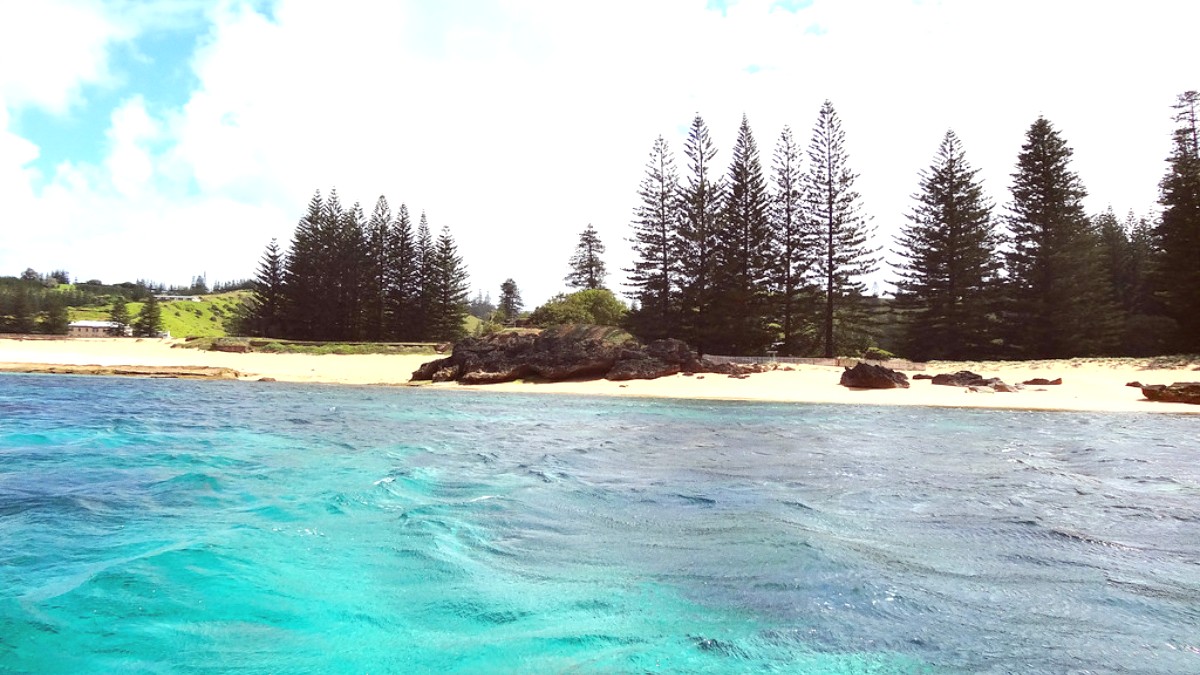
Australia
Norfolk Island enjoys a subtropical climate, with mild temperatures throughout the year. This consistent weather supports pleasant visits at any time, but certain periods offer particular advantages depending on your preferences.
Rainfall occurs throughout the year, but amounts are generally heavier from May to August. Showers are often brief. Humidity levels are higher during the summer months, noticeable especially in January and February.
Each season offers a distinct way to experience Norfolk Island, balancing crowd levels with weather conditions and specific activities.
High Season (Nov-Jan & Apr-May): Coincides with school holidays, higher visitor numbers. Ideal for water activities, but expect higher prices and crowds. Shoulder Season (Feb-Mar, Sep-Oct): Pleasant weather, fewer crowds, potentially lower prices. Low Season (Jun-Aug): Cooler temperatures, ideal for hiking and historical sites. Best prices, significantly fewer tourists. Excellent for whale watching (July-October).
Cyclones (Nov-Apr): Rare direct hits, but strong winds/heavy rain possible. Monitor forecasts.
July to October (Humpback whale migration)
September to March (Peak breeding season)
Plan accordingly for specific interests.
Year-round, winter ideal for comfort.
December to April (Warmest water temperatures).
Mild subtropical climate all year.
14°C (57°F) to 25°C (77°F)
Cooler in winter months.
Ideal for swimming, snorkeling, and other water activities in the warm, clear bays. Beach days are a highlight.
Cooler temperatures support longer hikes and more comfortable exploration of historical sites. Whale watching is a major attraction.
Ideal for swimming, snorkeling, water activities.
Higher prices, more crowded attractions.
Pleasant weather, fewer crowds, good value.
Cooler temperatures for hiking, best prices, whale watching.
Water activities may be cooler, some businesses on reduced hours.
As an external territory of Australia, all non-Australian citizens require a valid Australian visa to enter Norfolk Island. Secure the correct visa before your travel date.
Obtain your Australian visa before traveling to Norfolk Island. Applications are made through the Australian Department of Home Affairs website. Do not travel without a confirmed visa, as airlines will deny boarding.
Upon arrival at Norfolk Island Airport (NLK), passengers clear Australian immigration and customs, similar to mainland Australia. Be prepared to present your passport and visa, and to declare any goods as per Australian customs regulations.
Norfolk Island can be a relatively expensive destination due to its isolated location and reliance on imported goods.
These estimates exclude international flights and assume daily spending on accommodation, food, transportation, and activities.
Budget Traveler: AUD $150 - $250 per day. Focus on self-catering, economical car hire (approx. $30-$50/day), and free activities.
Mid-range Traveler: AUD $250 - $450 per day. Includes mid-range apartments, a mix of self-catering and casual dining, and guided tours.
Motel/Self-contained unit: AUD $100 - $250 per night. Apartment/Cottage: AUD $180 - $400 per night. Boutique Hotel/Luxury Villa: AUD $350 - $600+ per night.
Many options feature kitchenettes for self-catering.
Prices are higher during peak seasons.
Coffee/Basic Breakfast: AUD $5 - $15. Lunch (casual): AUD $15 - $30. Dinner (mid-range): AUD $30 - $60 per main. Fine Dining: AUD $70+ per person. Local Fresh Fish: AUD $35 - $55.
Local produce markets offer fresh and delicious options.
Imported goods at supermarkets are more expensive.
Car Hire: AUD $40 - $80 per day (fuel extra). KAVHA Guided Tour: AUD $20 - $40. Glass Bottom Boat Tour: AUD $60 - $80. Fishing Charter: AUD $150 - $300+ per person. Museum entry: AUD $10 - $20.
Many scenic drives and national park walks are free.
Fuel prices are higher than mainland Australia.
| Category | Budget Range (AUD) | Mid-Range (AUD) |
|---|---|---|
| Accommodation | $100-$150 (motel/self-contained) | $180-$300 (apartments/boutique) |
| Food (Daily) | $40-$60 (self-catering/takeaway) | $70-$120 (mix of self-catering/casual) |
| Car Hire (Daily) | $30-$50 (economical) | $40-$60 (comfortable sedan) |
Norfolk Island presents a very safe travel environment with an extremely low crime rate.
No specific vaccinations for entry from Australia/NZ. For international travelers, standard recommended vaccinations for Australia apply (Tetanus, Diphtheria, Pertussis, MMR, Hepatitis A and B). Consult a medical professional well in advance.
High UV index. Use High-SPF broad-spectrum sunscreen, wear hats (Wide brim sun hat), Protective clothing, stay hydrated, seek shade.
Mosquitoes and sandflies. Use Insect repellent, wear long sleeves and pants at dawn/dusk.
Minor Injuries:
Uneven terrain on walking tracks and sharp coral on some beaches pose risks. Wear appropriate footwear, especially for coastal exploration or hiking. A basic Travel first aid kit is advisable for cuts or scrapes.
Dehydration may occur due to the subtropical climate. Drink plenty of water throughout the day. While food hygiene is generally good, exercise standard precautions: ensure food is cooked and stored correctly, wash hands frequently.
Tap water is generally considered safe to drink. Some visitors prefer filtered or Bottled water. A reusable Water purification bottle can be considered.
The island's only hospital. It offers general medical, urgent, and emergency care, and a pharmacy. For serious emergencies, evacuation to mainland Australia may be needed. This is costly without comprehensive travel insurance.
For life-threatening emergencies (Police, Fire, Ambulance), dial 000 from any phone on the island.
No Australian embassy on Norfolk Island. For consular assistance (non-Australian citizens), contact your country's embassy/consulate in Canberra or Sydney, Australia.
Norfolk Island has an extremely low crime rate. There are no specific neighborhoods with elevated crime concerns. While the island is safe, basic personal safety observations are still advisable, like securing valuables.
Travel insurance is strongly recommended. Ensure your policy has comprehensive coverage for medical emergencies (including evacuation), trip cancellation/interruption, and luggage loss.
Emergency medical evacuation to mainland Australia can amount to tens of thousands of dollars without insurance.
Many standard travel insurance policies for Australia will cover Norfolk Island, but confirm this with your insurer before purchase. Some policies exclude specific territories.
Consider World Nomads for adventurous travelers, SafetyWing for digital nomads, or Insubuy for US visitors.